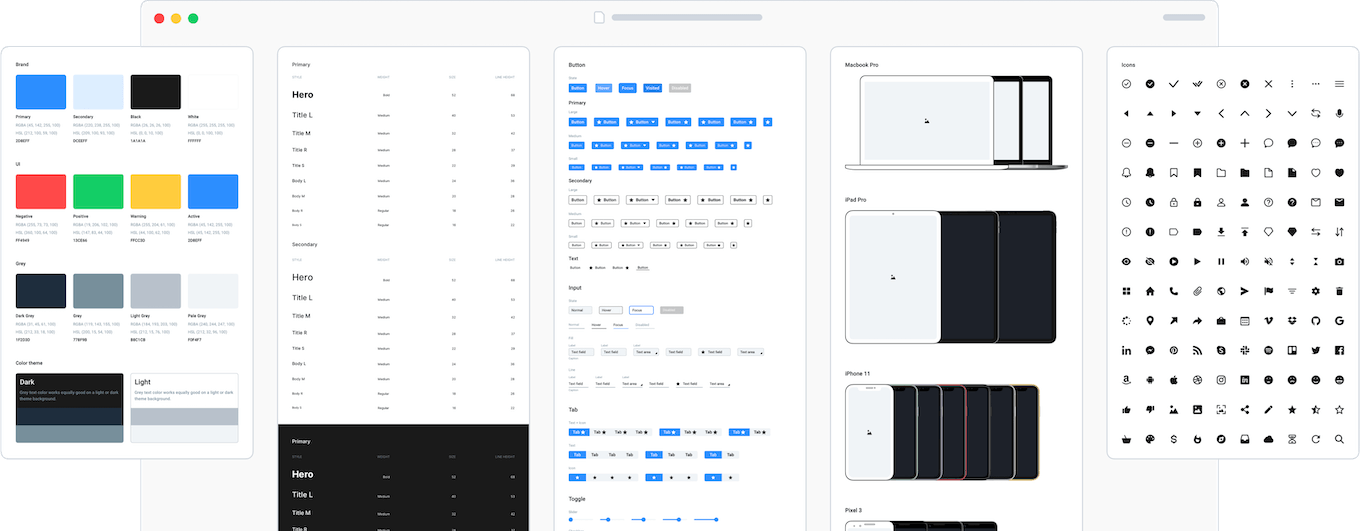Why design is so important – for online business too

To earn money from a product or service, you have to help users reach their goals.
Design is a vessel to do this…and even more.
As an experienced product designer, I share my view on design, what inspires me, and why design is equally important for customers and online businesses.
What design means to me
A while back, I was interviewing for a UX position Three people asked me the same question: ”What does UX mean to you?”
I wasn’t sure what they wanted to hear, so I said a few things that were floating around in my head. Design is good UX. Design should communicate clearly to the user. The intention behind a design should be obvious for the user.
Maybe they wanted to hear that design means designing something according to the heuristics of Don Norman (former VP of the Advanced Technology Group at Apple, now director of The Design Lab at the University of California, San Diego, author of The Design of Everyday Things). Or something else entirely. In the end, I was just too young for them at the time, but the conversation got me thinking even harder about what design really means to me.
The artist Piergiorgio Robino – What a croissant has to do with design

Piergiorgio Robino, who also leads the artist collective “Nucleo”, has compared design to a croissant.
Design, he says, is a combination of many things. First of all, you need knowledge of its history. Then you need a list of the elements, which in this case are the ingredients. But that’s not enough. You also need a recipe that works.
To serve the specific purpose of the baker, it is necessary to have a target group that will buy the croissant and, at best, eat it afterwards.
Existing recipes give the baker room for creativity, as one recipe can be combined or modified with different ingredients but the product remains a croissant. For example, there are plain croissants, and croissants with fillings: cheese, bacon, chocolate, etc.
Design brings the world of a user to a product. From a holistic point of view, design is part of the world that you solidify in a medium.
Approach to good design
As an applied science student, I learned to isolate things and think abstractly about how a system works. But it’s more fulfilling to look at the system holistically and think about how it interacts with other things – it’s not just about isolated interactions. Even though the world is much more complex, you have only a limited view. And by isolating individual issues, you lose sight of the whole.
Good design takes the user’s perspective. If this is not done, the product will either be a work of art without any applicable functions or a device that serves a purpose without actually inspiring.
Why is design so important now?
The Bauhaus movement of the 1930s demonstrated more than ever before why design is important. Bauhaus brought together utility and aesthetics. The movement sought to make design accessible to a wider public, not just a select few, as was the case during the Renaissance. Today, we find the Bauhaus legacy in companies like Ikea and Apple.
Here’s my definition of design and what its impact is:
Design …
- shapes reality
- is a vehicle to other areas
- is a manifestation of a solution
- helps to create order
- builds systems
- solidifies concepts
Simply said, design meets our needs and gives us what we want. Design is international and intentional. It helps to achieve a set goal.

What is good design?
Bad design is immediately recognizable. Good design, on the other hand, is less quickly identified as such because it adapts optimally to its environment.
Good design builds on proven concepts of the past and present, on influences that don’t immediately fade, on influences that are economic and cultural. Good design is transcendent to what is and what was. It is thoughtful and clear, and in some ways invisible. It is enriching and helpful.
As the well-known industrial designer Dieter Rams puts it, good design is:
- Innovative – it is an improvement on preceding designs
- Useful – it provides a solution to an existing problem
- Aesthetic – it needs to be aesthetically pleasing to be engaging for the user. See also: Unity in design
- Understandable – the user of a product should understand the design with as little guidance as possible
- Unobtrusive – it is not irritating but fits well with the environment. Good design speaks for itself; it’s intuitive
- Honest (humble) – it is not full of hidden threats or does things on its own without the user’s consent
- Long-lasting – it should work for as long as possible
- Environmentally friendly – it considers its ecological impact.
For further information see Dieter Rams: Ten Principles for Good Design

How to become a good designer
Research on prominent people in recent and not-so-recent history reveals certain characteristics that make a good designer.
10 points were found about this based on scientific data:
A good designer …
- uses their own products. If they have a ‘good for them, but not for me’ mentality, it probably isn’t good enough.
- fails early, fails fast. It is important that we know early on if an idea will work. Many start-ups think that they will be the next big hit when the market thinks their idea is mediocre.
- thinks broadly about how their design will be implemented and how it fits into the user’s daily life. When you design a time travel machine, think about its implications and how it will be used. Consider unintended uses of a product as well. In other words, they explore edge cases of a product or service.
- thinks about the little things and not just the big picture. The details count as much as the rest. Think about certain micro-interactions that can brighten someone’s day. When there is a more complex flow, and many screens are involved, they help users on each screen by adding that extra something that makes it easier for them to proceed and complete an end-to-end journey.
- is curious and open-minded to find (and fix) those little irritations, the problems that people face every day.
- immerses themselves in the world of people and culture to understand what motivates and frustrates them.
- thinks from the user’s perspective to see on their level how a product might be used. See also: The road to maximum usability leads through minimal cognitive load and The Price of Interaction
- is deliberate in their approach, consciously applying certain methods or ideas to the designed artifact.
- doesn’t try to be original, just tries to be good. The thing with originality is that it may catch on, but usually it is frowned upon. Novelty for novelty’s sake usually suffers when it comes to best practice.
- stays current with their industry knowledge to keep their products and services relevant.
Young designers often believe that if they just follow the platform’s style guide, a usable product will emerge. This is a fundamental misunderstanding of the style guide effectiveness myth that needs to be dispelled
It takes much more than just following a blueprint and believing that it already fulfills the goal of the work. The viewer quickly notices when something was hastily put over something else without any thought; this of course has a negative effect on the whole look.
Good design for websites and software
In the past, we hand-crafted our design, influenced heavily by culture and ideals. Think of the Gothic style that was common in Europe in the late Middle Ages.
Today’s Neo-modernism is not a new concept; it stems from the Bauhaus movement.
We are moving to more amorphous design solutions, combined with a non-tangible experiential element to fulfill the business goals and help enhance the sale of a product or service.
For websites and software, design should help to harmoniously combine body-copy and graphic elements into a wonderful overall picture and inspire the customer or lead.
To do this, it must be designed in such a way that the user is guided in a clear and structured way and can intuitively find their way around. Of course, a little wit and beauty can also spice things up, as long as they don’t distract from the essentials. If the user feels well taken care of and gets what they expect or were promised in response to their interactions, their interest and satisfaction increase or, with regard to websites, they stay longer because they want to discover more.
To turn even more leads into customers, it is important to think about how the design, text, and other possible elements interact and implement this from a psychological point of view; this is why copywriters and designers should work hand in hand.
Sites that are also technically optimized in terms of SEO provide the user with a very positive experience, which can greatly increase the conversion rate and make the website a sales booster.
Differentiate yourself from the rest, but also create a unique experience that people love and most importantly one that helps them get where they want to go with the product you have created.
Conclusion
Good design consists of much more than just providing a beautiful solution. It combines the useful with the aesthetic and directly inspires people to think.
Design shapes our physical and non-physical (digital) reality. It combines science and art in practical applications for people.
It is like magic: It can solve a new problem and usher in innovation, which represents a technological and cultural evolution that drives the world forward. As a result, solutions to more complex problems are developed for the betterment of individuals, be they a software user who wants to implement something even more efficiently, a site visitor searching for an answer, or a patient in a hospital waiting for treatment.
Design is simply the catalyst for innovation! According to the UK Design Council, investment in good design leads to a 20-fold increase in net sales. That alone makes UX/UI design worth spending money on.
Great designers bring together all sorts of disciplines. They know the beginning and end of a project. They know the process itself. They are involved in communication, know about the competition and costs, and develop solutions that people will use tomorrow.
recommended
articles
Find out more about the topic





Share your opinion with us